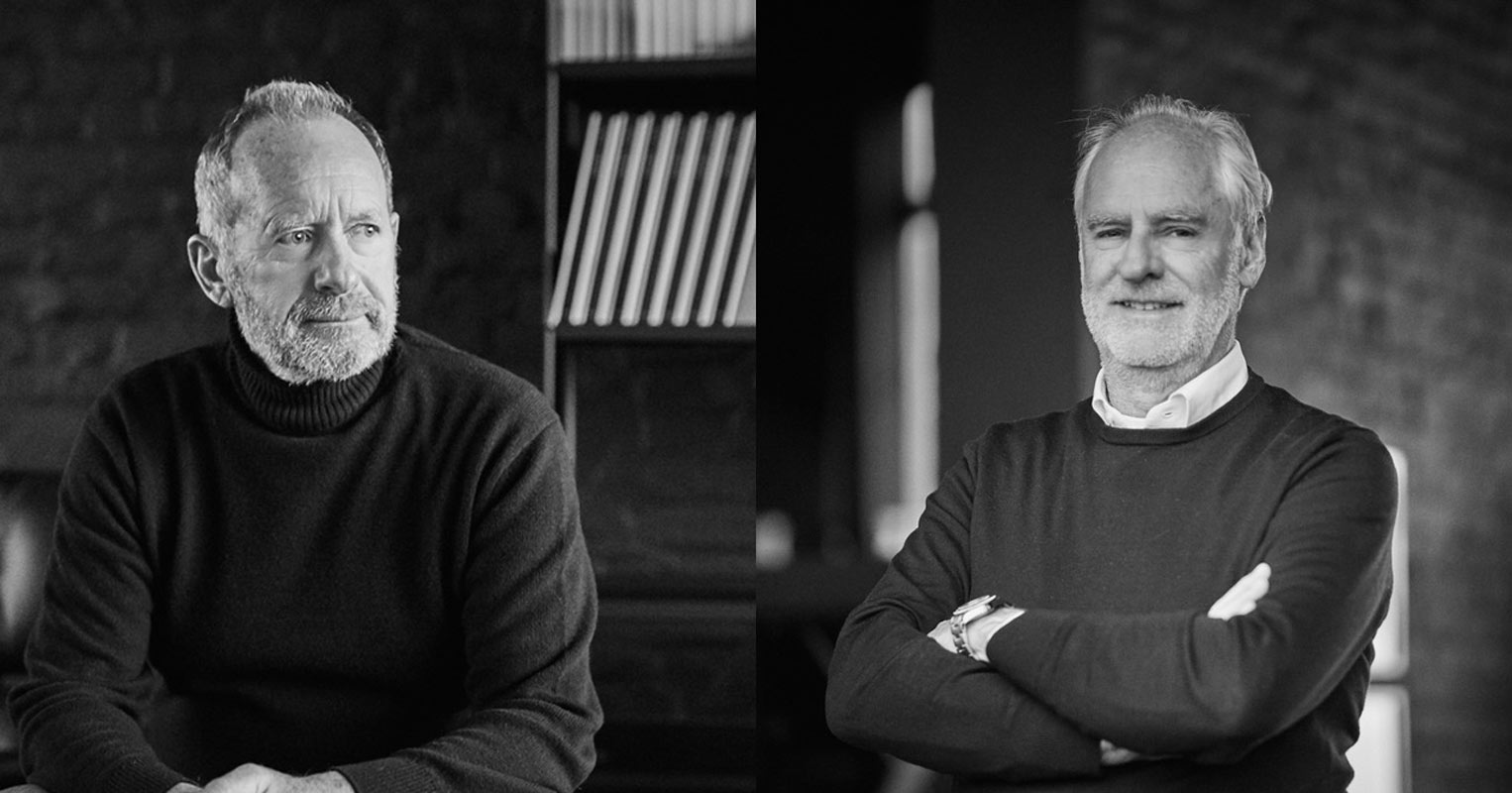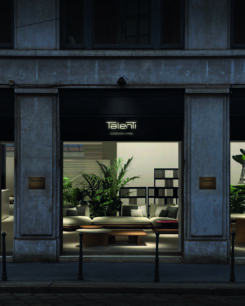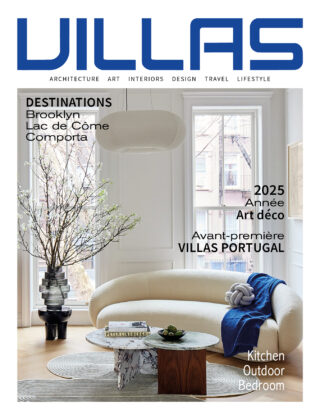What brought you together?
Didier Bindels – Our first project. I met Pierre because he was a customer of a hi-fi shop I was running at the end of the 1970s. I was also working as a service provider for shop interiors in Belgium (painting, electricity…). At that time, one of my clients asked me to find an interior designer. I immediately thought of Pierre. We got on well together and proposed our first joint project to the ready-to-wear shop Quorum in Knokke-Heist. They accepted. We contacted Simonis, a specialist in renovation and interior design at the time, to help with the project.
Pierre Hoet – We realised that we complemented each other very well: Didier on the sales and management side, and me, a young interior designer, on the creative side.
How did the “Instore adventure” start?
DB – Pierre’s father, who was a hospital architect, knew of a second-hand contemporary furniture shop called Instore, which occupied a house on Rue Tenbosch in Ixelles. One day, the shop was for sale and we jumped at the chance. Since the beginning of this adventure, we have considerably expanded Instore, which now covers 1,500 square metres and occupies three houses.
What were the first brands you introduced at Instore?
PH – The Italian design brand Zanotta was one of them, then Acerbis.
DB – When we bought Instore, their offering was based on vintage furniture for sale by Le Corbusier and Eero Saarinen, among others.
PH – We preferred to sell new products. For example, we offered Bonacina models, which were affordable, then we moved upmarket when IKEA and then Habitat set up shop in Belgium. And very quickly, we became regulars at the Milan Furniture Fair to spot the new items…
Who were your first clients?
DB – Belgacom, Texaco and clothing stores in the Louise and Toison d’Or galleries for whom we designed the interior fittings and scenography. Francis Ferent and others followed.
How has your personal interior design been transformed by your business?
DB – Instore has gradually influenced my tastes and has helped transform my daily life, even though I am not from this milieu. Pierre taught me homogeneity and timelessness in interior design; a sense of classicism through the use of monochromes to unify spaces.
PH – I went to La Cambre. My parents were architects and I lived in a contemporary house. So I was already familiar with the profession before I got involved…
BF – The last few guests I had at my house could hardly believe that my house is 20 years old.
PH – That’s not surprising. Our credo is constant and it is to offer furniture and interior design services that are exceptional and whose result is timeless. We favour elegant lines and materials that develop a patina over time. The La Manufacture restaurant in Brussels is a good example of our projects that have lived through the ages. At the time, it was an investment for its owners. Today, they are still delighted with it.
What is the strength of Instore services?
DB – After-sales service (we never leave a problem unattended).
PH – As well as the selection of products and the tailor-made fitting services… Our customers know that we always find solutions to their needs. They trust us with their eyes closed.
DB – For our various sites, I have always taken care of the technical aspect of things, while Pierre has always taken charge of the aesthetics of the sites. I am always passionate about the latest technologies. Home automation is now central to many Instore projects.
Voir cette publication sur Instagram
Une publication partagée par VILLAS DECORATION (@villasdecoration)
Which Belgian architects did you work with?
DB – Marc Corbiau’s agency, for a long time, and Olivier Dwek. He orders furniture from us from time to time.
PH – We have also renovated interiors by iconic Belgian architects such as a house belonging to the family of designers Sylvie Feron and Réné Baucher, former founders of the Baucher-Feron design boutique.
What was the place of international design in Belgium in your early years?
PH – Stylish solid wood furniture was still ubiquitous and the contemporary furniture scene was confidential (there was little talk of “design” then). Today, it represents a large part of the new furniture sales market. Our reputation has increased considerably since the 1980s. The public has also become more aware of design through magazines and exhibitions.
DB – All the brands we sell are visible in contemporary culture: in films, in series… This also contributes to the appeal of contemporary furniture to a younger audience. On the other hand, this public is attracted to design because their parents furnished themselves with furniture signed by Charles & Ray Eames for example. They are now aware that this furniture is durable because it is timeless and of high quality.
PH – They are buying for the future.
How do you respond to customers who are looking for different styles of products than what you offer?
PH – We also offer separate brands. Some of our customers are sometimes looking for designs to furnish their interiors that are far from the sober and contemporary style that makes us so successful. The Italian publisher Edra – which we like very much – has become a must for those looking for an original sofa for their living room. Their famous Cipria model, designed by the Brazilian duo Fernando and Humberto Campana, has even been purchased by private individuals for children’s rooms. This seems incredible when, at the moment, the economic crisis that our society is going through is refocusing our needs towards classic and non-fashionable pieces.
What is the place of contemporary design in relation to reprints?
PH – It remains minimal because the success of brands like Cassina and Knoll is essentially based on the reproduction of emblematic works of the “masters of design” dating mainly from the 1950s and 1960s.
DB – The new generation is first interested in these classics and then discovers the productions of the new creators: Michael Anastassiades and others.
PH – In parallel with this trend, most of the major brands of high-end contemporary furniture are gradually being bought out by large groups or merging (such as MillerKnoll, the union of Knoll and Herman Miller).
Is the porosity between indoor and outdoor furniture over?
PH – Completely. The evolution of materials for designing resistant garden furniture, from structures to coverings, is such that everything is now possible. Current technologies have made it possible to develop models that would have been unimaginable twenty years ago.
DB – 80% of our sales of top-of-the-range outdoor furniture are to foreign countries, however, because the weather in Belgium does not allow for a full outdoor life. They are exclusive customers who have second homes for their holidays abroad, in France on the Côte d’Azur, in Italy in Sardinia or in the Caribbean in Saint-Barth.
PH – Some of our most loyal clients also have addresses in France or even Canada. They come back to us for one thing only: the design of a turnkey project with an elegant and solid vision.





